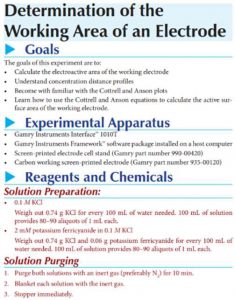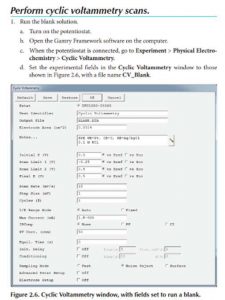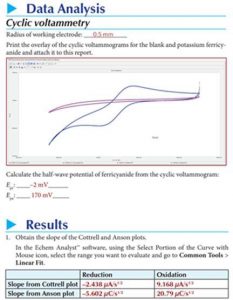1010T Starter Package
The Interface 1010T Potentiostat/Galvanostat/ZRA and Starter Pack is designed to help people understand and start making measurements sooner.
The kit includes:
- Interface 1010T Potentiostat/Galvanostat/ZRA
- Five experiments
- Student and Teacher’s manuals (digital)
- Cells and electrodes
Experiments have been chosen to help learn a variety of techniques from cyclic voltammetry to pulse techniques to corrosion techniques and even electrochemical impedance spectroscopy (EIS).
Cyclic Voltammetry
- Determine the redox potential and diffusion coefficient of potassium ferricyanide.
Determination of Working Area of an Electrode
- Calculate the electroactive area of the WE. Understand concentration distance profiles. Familiarization with the Cottrell and Anson equations
Comparison of Pulse Techniques
- Compare different pulse techniques. Determine amount of copper in an unknown water sample
Corrosion of Mild Steel at different pHs.
- Determine the corrosion rates for mild steel at different pHs.
Electrochemical Impedance Spectroscopy
- Perform EIS on a network of resistors and capacitors. Model EIS data using an equivalent circuit to extra resistor and capacitor values.
Our student and teacher manuals are ideally laid out with goals of each experiment, necessary equipment, reagents and chemicals (including instructions for preparation).
We also include detailed step-by-step procedures to help you become familiar with operation of the instrument and software. This helps keep the focus on learning the material versus having to simultaneously learn the software.
Each manual also includes questions regarding data analysis while the teacher’s manual includes the expected results of the experiments as shown on the right. You can see what each student should be seeing and also what they should be calculating in their data workup.



